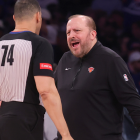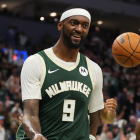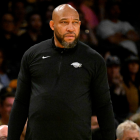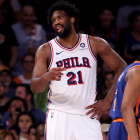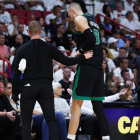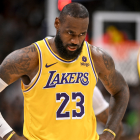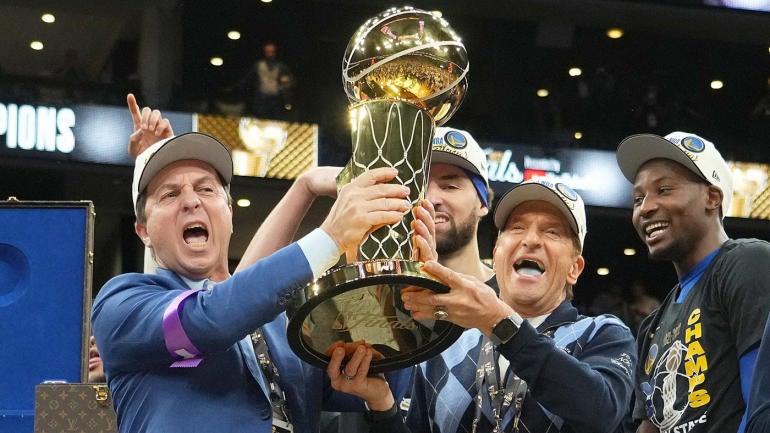
The 2021-22 Golden State Warriors weren't just the most expensive team in NBA history last season. At roughly $346 million in combined salary and luxury taxes, they were the second-priciest group of players ever assembled in the history of North American professional sports. The NFL and NHL use hard salary caps, so no team has ever exceeded the current cap in either league ($208,200,000 for the NFL and $82,500,000 in the NHL). No baseball team has ever officially topped that total either, though the Dodgers are currently on track for a whopping $357 million in combined salary and competitive balance taxes.
But don't worry, Warriors fans. Los Angeles isn't going to hold that record for long. Team owner Joe Lacob will surely break it next season as he tries to defend Golden State's 2022 championship. Doing so is going to be prohibitively expensive for a multitude of reasons that extend well beyond the talent on his roster:

CBS Sports HQ Newsletter
Your Ultimate Guide to Every Day in Sports
We bring sports news that matters to your inbox, to help you stay informed and get a winning edge.
Thanks for signing up!
Keep an eye on your inbox.
Sorry!
There was an error processing your subscription.
- The Warriors, as they did in 2022, will be subject to the repeater penalty attached to teams that have paid the luxury tax in three of the previous four seasons. The NBA's tax formula grows increasingly punitive as teams go higher and higher above the tax line, and the repeater tax adds an extra dollar to the pot for every dollar above the line the team spent.
- The Warriors have four players either making the max salary or coming fairly close in Stephen Curry, Klay Thompson, Andrew Wiggins and Draymond Green, and all of them have enjoyed those hefty salaries for several years. This would obviously be expensive under any circumstances, but it is an especially dangerous point in history to have so many late-stage, near-max contracts because of COVID-19. Contracts at or near the max typically include eight percent raises annually. These raises are designed to reflect expected growth in the salary cap … but because of COVID, the cap has risen just three percent over the past two offseasons. That didn't change what they owed their stars, though, so while normal circumstances would have pushed the cap and tax line high enough to help the Warriors absorb this enormous payroll, current conditions have essentially allowed their player salaries to outpace the league's revenue growth.
- The Warriors have seven impending free agents from last year's roster. Two (Damion Lee and Juan Toscano-Anderson) are minimum-salary players who wouldn't be missed much. Andre Iguodala could easily retire. But the other four -- Kevon Looney, Otto Porter Jr., Gary Payton II and Nemanja Bjelica -- all outplayed their last contracts and deserve raises.
A year ago, Warriors general manager Bob Myers hinted at $400 million as an upper limit on Golden State's payroll … but with an interesting caveat coming off a play-in loss. "Even if my owner Joe wanted to do that, I think he'd had to fire me if we paid $400 million and didn't we a championship or something of that nature," Myers said at the time. Well, the Warriors just won a championship, and they'll be in the hunt again next season. They have the capacity to re-sign most of their own free agents through their own Bird rights or through cap exceptions. And based on what those players are likely to cost, that $400 million limit is probably going to be in the rearview mirror in the very near future. So let's take a look at Golden State's finances. Where are they now? How high could they conceivably go? And where are they realistically going to end up?
The starting point
Before the Warriors make a single move, they'll start the offseason with a total of nine players (one of which will be a draft pick) making roughly $24 million more than the projected $149 million tax figure. Using this very handy publicly available luxury tax calculator, we can calculate the $85 million bill that would come with this partially-formed roster.
Player | Salary |
Stephen Curry | $48,070,014 |
Klay Thompson | $40,600,080 |
Andrew Wiggins | $33,616,770 |
Draymond Green | $25,806,469 |
$9,603,360 | |
$5,739,960 | |
$3,901,399 | |
$3,740,160 | |
No. 28 overall pick* | $2,196,240 |
Total salary | $173,274,452 |
Luxury tax bill | $85,303,647 |
Combined total | $258,578,099 |
*The figure listed is 120 percent of the rookie scale, which is the industry standard, though technically the Warriors could sign their first-round pick for as little as 80 percent of scale if he agrees.
With 60 percent of a roster in place, the Warriors are already set to pay over $258 million for their players. That's more than every team except the Clippers and Nets paid last season, and we still have six roster spots left to fill. Even if we took the cheapest possible route available to us by limiting the roster to 14 players and signing rookies for those five necessary slots at $953,000 apiece, the Warriors would still wind up with a final combined payroll of $287 million next season. Spoiler alert: The Warriors aren't going to sign five undrafted free agents. So here is the most expensive conceivable scenario: The one in which Golden State keeps all of its core players in place.
The upper limit
For now, we can assume that either one (if the Warriors limit themselves to 14 players) or more likely two of the remaining roster spots will go to players making the minimum salary. Those players may or may not be some combination of Iguodala, Toscano-Anderson and Lee, but for our purposes, so long as they are veterans, it's irrelevant. While the minimum salary varies based on how much experience a player has, teams only pay those players the two-year minimum themselves while the league reimburses them for the rest. The two-year minimum for next season is projected to be $1,719,000 next season, so we'll act as though the Warriors will have two such salaries on their books. While they could choose to roster one or both of their second-round picks (they own Nos. 51 and 55), the Warriors already have so much youth that in this all-in scenario, we'll say for now that they use those picks on the players they plan to sign to two-way deals.
Three of the core four free agents are relatively simple to figure out here, assuming they choose to remain with the Warriors:
- The Warriors have Early Bird rights on Payton. That allows them to pay him a starting salary of up to 105 percent of the average player's salary in the previous season. While we don't have that exact figure yet, the non-taxpayer mid-level exception is based on a projection for the upcoming season's average salary, so for a reasonable estimate, we can add five percent to last season's mid-level exception of $9,536,000 to get to $10,012,800 as a rough estimate of what the Warriors can give Payton.
- The Warriors have only Non-Bird rights on Porter and Bjelica. This allows Golden State to give either of them a 20 percent raise on their minimum salary from last season in order to stay without touching their cap exceptions. That number might be enough for Bjelica, who is surely to be atop the wishlists of many contenders looking for depth at the minimum, but Porter is going to be a mid-level player at least. So let's say the Warriors keep him at the taxpayer mid-level exception, which is projected to come in at $6,392,000.
And finally, we have to address Looney. Technically, as a free agent with full Bird rights, the Warriors can pay him anything up to his max in order to stay. He's not going to demand that much, but he's going to be pricey. So how do we project his salary? We can start with John Hollinger's BORD$ projection of $12,533,705 as Looney's fair market value. However, we're going to scale it down slightly to account for the reality facing free agents of Looney's phylum. With the possible exception of Portland, the cap space teams are rebuilding and unlikely to pay up for a veteran center with a lengthy injury history. As the Warriors probably won't cooperate on any sign-and-trades, we can deduce that Looney's best offer is likely to come from a team wielding the non-taxpayer mid-level exception. Therefore, for the sake of ease, we'll say Golden State agrees to match that offer.
With all of these figures in mind, we come to a total projected payroll of almost $506 million.
Player | Salary |
Stephen Curry | $48,070,014 |
Klay Thompson | $40,600,080 |
Andrew Wiggins | $33,616,770 |
Draymond Green | $25,806,469 |
Kevon Looney* | $10,349,000 |
Gary Payton II* | $10,012,800 |
James Wiseman | $9,603,360 |
Jonathan Kuminga | $5,739,960 |
Otto Porter Jr.* | $6,392,000 |
Jordan Poole | $3,901,399 |
Moses Moody | $3,740,160 |
Nemanja Bjelica | $2,507,337 |
No. 28 pick* | $2,196,240 |
Minimum player No. 1 | $1,719,000 |
Minimum Player No. 2 | $1,719,000 |
Total salary | $205,973,589 |
Luxury tax bill | $300,032,109 |
Combined total | $506,005,698 |
*Projected salary
And there we have it: A scenario that produces a half-billion-dollar roster. If winning is Golden State's only priority, this is the path the Warriors will take. Even if they aren't interested in keeping all of these players, paying them only hurts in financial terms, and keeping them would allow the Warriors to use them as salary ballast in future trades.
But as Myers hinted, there is an upper limit in here somewhere. So sadly, we have to assume for now that the $506 million payroll is not likely to become a reality quite yet.
The compromise(s)
According to Marc Stein, "The hope in Golden State is that it can neutralize the inevitable external interest in Looney and Gary Payton II while realistically understanding that Otto Porter Jr., after playing on a minimum deal, is going to be very difficult to retain." This makes plenty of sense both financially and in basketball terms. Golden State's Bird rights make it easier for them to keep Looney and Payton, but likely won't be enough for Porter. Besides, the Warriors have Moody and Kuminga waiting to take on bigger roles. No team wants to lose a two-way wing, but the Warriors are as well equipped to do so as any in the NBA.
We also might be able to trim a bit of money off Payton's deal. While he is enormously valuable to Golden State, specifically, he's a much trickier fit with most teams. Curry and Thompson offer such unusual spacing that Payton can effectively function as a center on offense, cutting and screening and rolling for the majority of his points. He's improved significantly as a shooter and made over 40 percent of his corner 3s last season, but that was an entirely new development and not one opposing teams are going to be especially eager to bet on sustaining outside of Golden State's ecosystem. Hollinger's BORD$ formula pegs him as a $7,131,857 player, and that seems about right. It staves off any of the expensive contenders hoping to lure him for the slightly cheaper taxpayer mid-level exception.
And though this is a relatively small expense, it's worth noting that the Warriors typically devote a back-of-the-roster spot to a cheaper long-term project. They may not continue that trend with all of their highly-drafted youngsters still in place, but remember, they chose Payton over Avery Bradley out of training camp last season. After developing Lee, Toscano-Anderson and others out of their Santa Cruz lab, they may try to save a couple of bucks by either keeping one of their second-round picks on the roster or plucking an undrafted player out of the G League for their 15th spot. A few years in the Golden State incubator can do such players a world of good.
So here's a slightly revised balance sheet with these tweaks in mind to come up with a somewhat more realistic number.
Player | Salary |
Stephen Curry | $48,070,014 |
Klay Thompson | $40,600,080 |
Andrew Wiggins | $33,616,770 |
Draymond Green | $25,806,469 |
Kevon Looney* | $10,349,000 |
James Wiseman | $9,603,360 |
Gary Payton II* | $7,131,857 |
Jonathan Kuminga | $5,739,960 |
Jordan Poole | $3,901,399 |
Moses Moody | $3,740,160 |
Nemanja Bjelica* | $2,507,337 |
No. 28 pick* | $2,196,240 |
Minimum player No. 1* | $1,719,000 |
Minimum player No. 2* | $1,719,000 |
Rookie minimum player* | $953,000 |
Total salary | $196,700,646 |
Luxury tax bill | $228,329,684 |
Combined total | $425,030,330 |
*Projected salary
With just these minor tweaks, we've shaved roughly $80 million off Golden State's final roster costs. We've exceeded that $400 million line Myers once set, but the revenue Golden State brought in during the postseason should more than offset the difference. The Athletic reported that the Warriors made roughly $7 million per home playoff game in the first two rounds of the playoffs for a total of $42 million. The projected take on a Western Conference finals home game would be $10 million apiece, and that figure doubled in the Finals to $20 million, according to Tim Kawakami. If those estimates held, the Warriors would have brought in a total of roughly $132 million in playoff revenue. So, yeah, they can afford this.
But if they really do need to cut costs further? Keep an eye on Looney. The Warriors drafted James Wiseman No. 2 overall in 2020 and would presumably like to work him into the lineup next season. If they are confident in his growth, they might set a walk-away figure on negotiations with Looney, who is sure to draw interest from several center-needy teams.
Either way, the Dodgers are going to have to sign another All-Star or two if they want to keep pace with Lacob's spending.
Warriors NBA championship gear now available
The Golden State Warriors have won their fourth NBA title in the last eight seasons. Now, you can celebrate with championship hats, shirts, hoodies, and more. See the entire collection here.
We may receive a commission for purchases made through these links.















